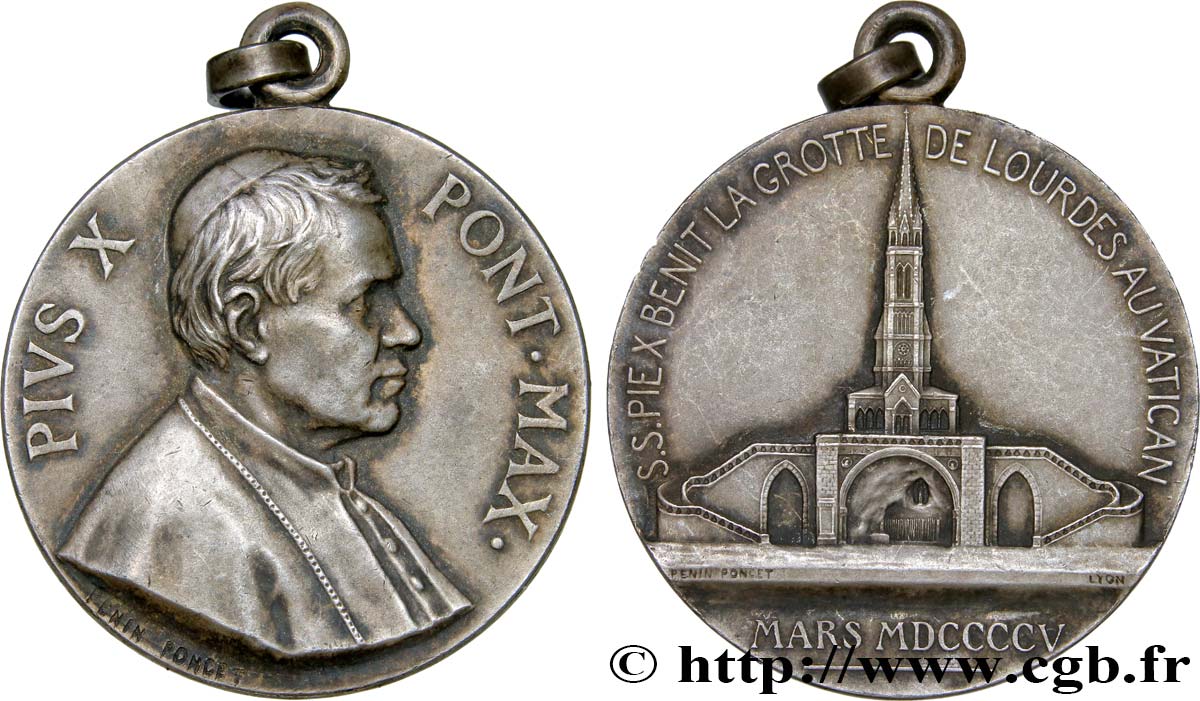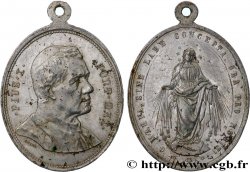E-auction 286-206685 - fme_438608 - ITALIE - VATICAN - PIE X (Giuseppe Melchiorre Sarto) Médaille, Pie X, Grotte de Lourdes
Devi Sign-in ed essere un offerente approvato fare un'offerta, Login per fare offerte. Conti sono soggetti ad approvazione e di approvazione sono raggiunti entro 48 ore. Non aspettare fino al giorno di una vendita si chiude per registrarti.Confermando la tua offerta su questo oggetto ti impegni ad un contratto legalmente vincolante per l'acquisto di questo prodotto e fare clic su «offerta» costituisce accettazione dei termini di utilizzo de e-auctions cgb.fr.
Offerta deve essere collocato in euro gli importi interi vendita only.The si chiuderà al momento sulla descrizione dell'oggetto, eventuali offerte pervenute al sito dopo l'orario di chiusura non verranno eseguite. Volte transmition possono variare e le offerte potrebbero essere respinto se si attende per gli ultimi secondi. Per ulteriori informazioni ckeck le FAQ.
SENZA COSTI PER GLI ACQUIRENTI.
SENZA COSTI PER GLI ACQUIRENTI.
| Valutazione : | 90 € |
| Prezzo : | 17 € |
| Offerta maxima : | 17 € |
| Data di fine vendita : | 08 ottobre 2018 18:39:30 |
| partecipanti : | 4 partecipanti |
Tipo : Médaille, Pie X, Grotte de Lourdes
Data: 1905
Nome della officina / città: 65 - Lourdes
Metallo : metallo bianco
Diametro : 30 mm
Asse di coniazione : 12 h.
Incisore PONCET Alexandre,
Maison PENIN PONCET
Peso : 11,80 g.
Orlo : lisse
Marchio : sans poinçon
Commenti sullo stato di conservazione:
Médaille en très bel état avec une patine grise hétérogène
Diritto
Titolatura diritto : PIVS X - PONT. MAX..
Descrittivo diritto : Buste à droite du pape Pie X, signé : PENIN PONCET..
Rovescio
Titolatura rovescio : S. S. PIE X BENIT LA GROTTE - DE LOURDES AU VATICAN // À L’EXERGUE : MARS MDCCCCV.
Descrittivo rovescio : Vue de la grotte de Lourdes. signé : PENIN PONCET - LYON.
Commento
Selon l’article de Jean-Pol Donné dans le Bulletin Municipal Officiel de Lyon, « Les Pénin, 170 ans de médailles (1ère partie et deuxième partie)», Ludovic Penin (1830-1868), fils de Marius Penin (1807-1880) et élève de Vibert et Fabisch à l’Ecole des Beaux-Arts de Lyon composera surtout des médailles religieuses et obtiendra d’ailleurs le titre de « graveur pontifical » en 1864. En 1867, Ludovic Penin décide l’acquisition de l’atelier d’estampage de boutons métalliques Mouterde-Billion à Monchat afin de fabriquer les médailles qu’il grave et édite. Ainsi est née la Maison Penin qui a poursuivi son activité sur le même site jusqu’au début du XXIe.
Mais en février 1868, la mort de Ludovic Penin, à l’âge de 38 ans, met en péril cette entreprise. Sur la recommandation de son ami Fabisch, Marius, revenu à Lyon, forma un jeune sculpteur : Alexandre Poncet. En deux ans, Poncet réussit à maîtriser la technique de la gravure en médailles. Dès lors, il se partage entre ses créations propres et la diffusion des médailles issues des poinçons laissés par Marius et Ludovic Penin. La Maison Penin, devenue Penin-Poncet après le mariage d’Alexandre Poncet avec la fille de Ludovic Penin, connait alors une grande prospérité favorisée par l’abandon du privilège de la Monnaie de Paris en 1893..
According to the article by Jean-Pol Donné in the Official Municipal Bulletin of Lyon, \\\"The Pénins, 170 years of medals (part 1 and part 2)\\\", Ludovic Penin (1830-1868), son of Marius Penin (1807-1880) and student of Vibert and Fabisch at the Ecole des Beaux-Arts in Lyon, mainly composed religious medals and obtained the title of \\\"pontifical engraver\\\" in 1864.. In 1867, Ludovic Penin decided to acquire the Mouterde-Billion metal button stamping workshop in Monchat in order to manufacture the medals that he engraved and published.. This is how Maison Penin was born, which continued its activity on the same site until the beginning of the 21st century..
But in February 1868, the death of Ludovic Penin, at the age of 38, jeopardized this enterprise.. On the recommendation of his friend Fabisch, Marius, having returned to Lyon, trained a young sculptor: Alexandre Poncet. In two years, Poncet succeeded in mastering the technique of medal engraving.. From then on, he divided his time between his own creations and the distribution of medals from the hallmarks left by Marius and Ludovic Penin.. The Maison Penin, which became Penin-Poncet after the marriage of Alexandre Poncet to the daughter of Ludovic Penin, then enjoyed great prosperity, encouraged by the abandonment of the privilege of the Paris Mint in 1893..
Mais en février 1868, la mort de Ludovic Penin, à l’âge de 38 ans, met en péril cette entreprise. Sur la recommandation de son ami Fabisch, Marius, revenu à Lyon, forma un jeune sculpteur : Alexandre Poncet. En deux ans, Poncet réussit à maîtriser la technique de la gravure en médailles. Dès lors, il se partage entre ses créations propres et la diffusion des médailles issues des poinçons laissés par Marius et Ludovic Penin. La Maison Penin, devenue Penin-Poncet après le mariage d’Alexandre Poncet avec la fille de Ludovic Penin, connait alors une grande prospérité favorisée par l’abandon du privilège de la Monnaie de Paris en 1893..
According to the article by Jean-Pol Donné in the Official Municipal Bulletin of Lyon, \\\"The Pénins, 170 years of medals (part 1 and part 2)\\\", Ludovic Penin (1830-1868), son of Marius Penin (1807-1880) and student of Vibert and Fabisch at the Ecole des Beaux-Arts in Lyon, mainly composed religious medals and obtained the title of \\\"pontifical engraver\\\" in 1864.. In 1867, Ludovic Penin decided to acquire the Mouterde-Billion metal button stamping workshop in Monchat in order to manufacture the medals that he engraved and published.. This is how Maison Penin was born, which continued its activity on the same site until the beginning of the 21st century..
But in February 1868, the death of Ludovic Penin, at the age of 38, jeopardized this enterprise.. On the recommendation of his friend Fabisch, Marius, having returned to Lyon, trained a young sculptor: Alexandre Poncet. In two years, Poncet succeeded in mastering the technique of medal engraving.. From then on, he divided his time between his own creations and the distribution of medals from the hallmarks left by Marius and Ludovic Penin.. The Maison Penin, which became Penin-Poncet after the marriage of Alexandre Poncet to the daughter of Ludovic Penin, then enjoyed great prosperity, encouraged by the abandonment of the privilege of the Paris Mint in 1893..








 Segnalare un errore
Segnalare un errore Stampate la pagina
Stampate la pagina Condividi mia selezione
Condividi mia selezione Fai una domanda
Fai una domanda Consegnare / vendere
Consegnare / vendere
 Descrittivo
Descrittivo












